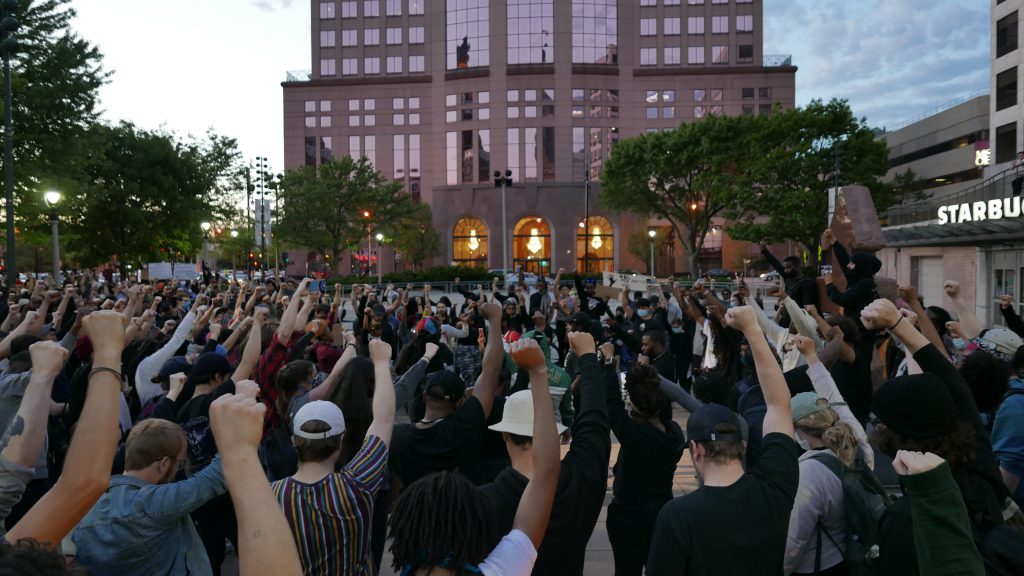Should Police Report Every Time They Draw Weapon?
MPD says it's a paperwork burden. Alderman says he's not looking for a Master's thesis.
Should the Milwaukee Police Department have to record every time an officer grabs their gun, mace or stun gun?
Alderman Khalif Rainey thinks the answer is yes. He’s introduced a Common Council file that urges the Fire & Police Commission to adopt a reporting requirement. The independent commission oversees hiring, firing, discipline and policy for the city’s police and fire departments.
“Ultimately at the end of the day it’s a deterrent,” said Rainey in explaining his proposal to members of the Public Safety & Health Committee on Thursday. He wants to see some form of log tracking when guns and other weapons are drawn.
“For those of you who have never been under the gun, it’s not an experience you’re going to ever forget,” said Rainey, an African American. “It’s something that will give us the chance to identify red flags, perhaps build a better police department.”
But MPD chief of staff Nick DeSiato said the department doesn’t support the proposal. “This is something that is well-intentioned, but from the administrative time and the overall burden on our offices and sergeants who are strapped in their capacity, this would get bogged down,” he said. “I think this would be overall unproductive from the department’s perspective.”
He said body cameras and an existing requirement to file a report when force is used already provide transparency.
“I find it a little interesting that we’re getting push back to this degree because this is something that is already required,” said Lewis. “I need a little more clarification on why this would be a problem for the department”
“I believe Alderwoman you misunderstood,” said MPD Inspector Leslie Thiele. “Just an officer pulling a gun is not a use of force.”
“That wouldn’t be an intimidation tactic?” asked Lewis.
“That’s not how I see it,” said Thiele.
“I’m questioning why we wouldn’t want to look at that,” said Lewis, referencing questionable incidents from across the country and one she found in a 2018 Urban Milwaukee article.
“I think the resistance alone from the police department is a clear indication of the frequency of this going,” said Rainey. “We need to see where it’s happening at, we need to see who it’s happening to, we need to see who’s doing it.”
“The message shouldn’t be that there is a problem we are trying not to expose,” said DeSiato. “The pushing back is that I think there are other methods that accomplish this.”
“We are not requesting a master thesis per incident,” said Rainey.
Ald. Scott Spiker said he was going to abstain from voting on the request until there was an understanding of the paperwork involved.
But Ald. Mark Borkowski, the council’s most vocal defender of rank-and-file officers, said he was comfortable with the file. “We are asking the Fire & Police Commission, who clearly has more and better expertise than the Common Council, that if they think this is worthy they should go for it,” he said. “I don’t have a problem with us having the Fire & Police Commission to look at this.”
DeSiato said he expected a more vigorous debate should the commission propose the requirement.
The committee passed the measure on a 4-0-1 vote.
Two Other Fire & Police Commission Requests
The committee unanimously approved two other requests for the Fire & Police Commission that were introduced by Council President Cavalier Johnson.
One calls for the police department and commission to work to engage community leaders to “rebuild trust and discuss community-oriented strategies to addressing local civil unrest.”
A second proposal calls for the commission to “redouble recruit efforts within Milwaukee neighborhoods so that the fire and police departments are more diverse and reflective of the communities they serve.”
The city’s collectively-bargained residency requirement was unilaterally stripped away by the state in 2013 and has led to an exodus of firefighters and police officers from the city. As of late 2019, 45 percent of the city’s public safety employees live outside the city.
“The end of residency has been a blow in many respects,” said Spiker. “I think Alderman Borkowski’s district is the only one that has lost more residents than mine.”
Two-thirds of Milwaukee police officers are white as of late 2019, while whites make up just over one-third of all city residents.
The full council will review the requests on July 7th. The Fire & Police Commission would ultimately need to take action to implement any of the proposals.
If you think stories like this are important, become a member of Urban Milwaukee and help support real, independent journalism. Plus you get some cool added benefits.
More about the 2020 Racial Justice Protests
- Plea Agreement Reached On Long-Pending Sherman Park Unrest Charges Involving Vaun Mayes - Jeramey Jannene - Oct 17th, 2024
- Rep. Ryan Clancy Settles With City Following 2020 Curfew Arrest - Jeramey Jannene - Dec 12th, 2023
- Supervisor Clancy Applauds Settlement in Clancy vs. City of Milwaukee - State Rep. Ryan Clancy - Dec 12th, 2023
- Tosa Protest Assails Federal Court Decision Exonerating Police - Isiah Holmes - May 9th, 2023
- Wauwatosa ‘Target List’ Trial Begins - Isiah Holmes - May 3rd, 2023
- Shorewood Spitter Found Guilty For 2020 Protest Confrontation - Jeramey Jannene - Apr 20th, 2023
- City Hall: City Will Pay 2020 George Floyd Protester $270,000 - Jeramey Jannene - Feb 14th, 2023
- Tosa Protest Tickets Dismissed - Isiah Holmes - Jul 21st, 2022
- Op Ed: ‘We Need More’ - Charles Q. Sullivan - Mar 4th, 2022
- Milwaukee Officers Circulate “2020 Riot” Coins? - Isiah Holmes - Nov 14th, 2021
Read more about 2020 Racial Justice Protests here
Political Contributions Tracker
Displaying political contributions between people mentioned in this story. Learn more.
City Hall
-
Council Blocked In Fight To Oversee Top City Officials
 Dec 16th, 2025 by Jeramey Jannene
Dec 16th, 2025 by Jeramey Jannene
-
Latest Effort to Adopt New Milwaukee Flag Going Nowhere
 Dec 3rd, 2025 by Jeramey Jannene
Dec 3rd, 2025 by Jeramey Jannene
-
After Deadly May Fire, Milwaukee Adds New Safety Requirements
 Dec 2nd, 2025 by Jeramey Jannene
Dec 2nd, 2025 by Jeramey Jannene






















